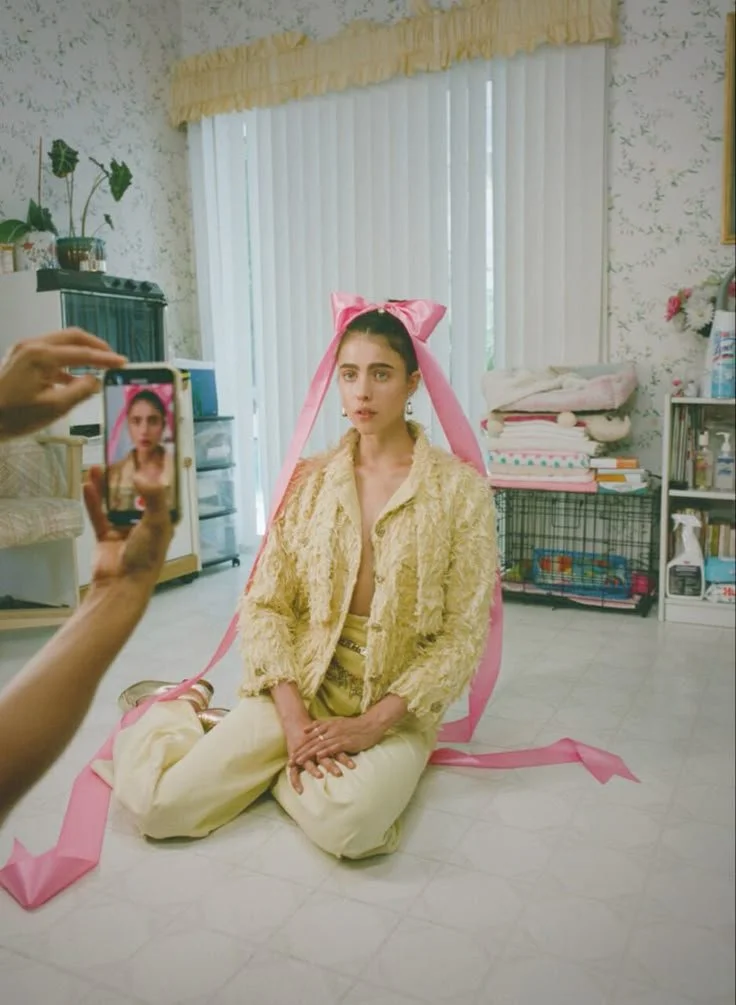The Rise of Aesthetic Survival: Must We Romanticize Everything?
Credit: CAIA Cosmetics
The Rise of Aesthetic Survival: Must We Romanticize Everything?
There’s something strangely comforting about pairing pain with prettiness—about dressing up to romanticize the everyday. For this generation, fashion has become more than self-expression; it’s emotional survival. It’s curling your hair to go nowhere. Putting on lip gloss after crying. Getting fully dressed just to sit at your desk and drink overpriced coffee.
Aesthetic choices aren’t just about being seen, but about feeling something.
Call it aesthetic survival: the act of using fashion to cope—of extracting meaning from the mundane, not because it inherently exists, but because we need it to. We don’t crave aesthetics due to a cultural void; we create our own as a psychological strategy—a way to navigate the constant overwhelm of modern life.
In that light, romanticization isn’t always frivolous. At times, it may be the only way we access joy within the repetition of our daily routine.
When Fashion Becomes a Coping Mechanism
Recently, I’ve found myself caught in a continuous cycle of romanticization. It’s not just about viewing the world through rose-tinted glasses; rather, it involves applying the aesthetics I observe online to my life. The morning matcha ritual. The soundtrack-backed walks with main character energy. The carefully curated “office siren” outfit. You name it—we’ve probably all participated. Guilty as charged. But in a world that constantly feels like too much, even these smallest acts of intentional aestheticism bring a quiet kind of joy.
After repeating these tender acts of curation day after day, I’ve started to wonder: am I chasing joy, or just replicating a feeling I saw on TikTok? Maybe both. Maybe neither. Lately, I’ve come to see it less as a habit and more as grounding. The slow pour of matcha isn’t really about wellness—it’s about control. About softness. True softness. Matcha spilled on the counter. A splash on my sleeve. The kind of softness that doesn’t ask to be aesthetic. Still, some part of me wants the matcha pour to look soft. Not be soft—look soft. It’s no longer about how the matcha tastes. It’s about how it looks. How it reads in my camera roll. Softness has become a scene I build. A gesture I rehearse. A performance of calm, staged between deadlines. An illusion that I’m living in a Sofia Coppola film.
Credit: Petra Collins
The Algorithm Is My Stylist (And Therapist?)
What’s fascinating is that I never planned to subscribe to any of these aesthetics. I didn’t wake up one day wanting to be an “office siren,” a “clean girl,” or adopt any of those core-prefixed personas — but somehow, after five TikToks and a casual Pinterest scroll, I found myself saving slicked-back bun tutorials and oversized blazer inspo without a second thought.
But is that truly what free will is? Is it true self-expression—or just a performance in costumes we didn’t even choose? That’s the paradox: sometimes it feels like freedom. Other times, like a script we didn’t write but perform anyway. There’s comfort in having the answers handed to you—outfits, vibes, even personality traits—especially when you’re uncertain yourself. But the moment your curated look speaks louder than who you are, the charm fades.
Seen through that lens, the algorithm doesn’t just show us content—it quietly suggests identities. Not just what to wear, but who to be. And weirdly, that can feel kind of good. It gives you a template. A reference point. A little structure when everything else is not.
When ‘Aesthetic’ Becomes the Point
Still, there’s a catch. Sometimes we get so into the look of living that we forget to actually live it. Like when the walk becomes about the playlist, not the fresh air. Or when you dress up your desk just to take a photo of it—then forget to open your laptop. Even study vlogs now feel more like aesthetic note-taking performances than actual studying.
It’s easy to spend so much time chasing the feeling of being alive that we forget to be in it.
We romanticize to cope, but when everything becomes aestheticized, the moment sometimes slips away. It becomes about how it looks, not how it feels. And that’s when it starts to get exhausting.
As writer @Ruthents puts it on Substack:
“For a while, I saw myself on a scale between two opposing aesthetics—the clean-girl Pilates type and the Slutty Chef chaos type. But now, I see that I don’t want to be anywhere on that scale at all. I don’t want my relationship with daily health to be the thing that defines me—my identity is not my exercise routine, my diet, or my alcohol consumption. I need to take care of myself, yes, but I also need to have fun… which feels like a pretty basic revelation.”
Rejecting aestheticism is its own kind of aesthetic—a quiet, grounded one that values presence over polish.
So Why Do We Do It?
Because we want things to matter. We want the small to feel big. We want to soften the edges of a world that feels too sharp. Romanticizing life gives us something to hold onto when things get blurry.
And maybe that’s okay. Maybe aesthetic survival is messy, too. Maybe you spill the coffee, and still, the scene holds. Maybe sometimes, a cute outfit and an overpriced coffee are enough.
Just… don’t forget to actually drink the coffee.

